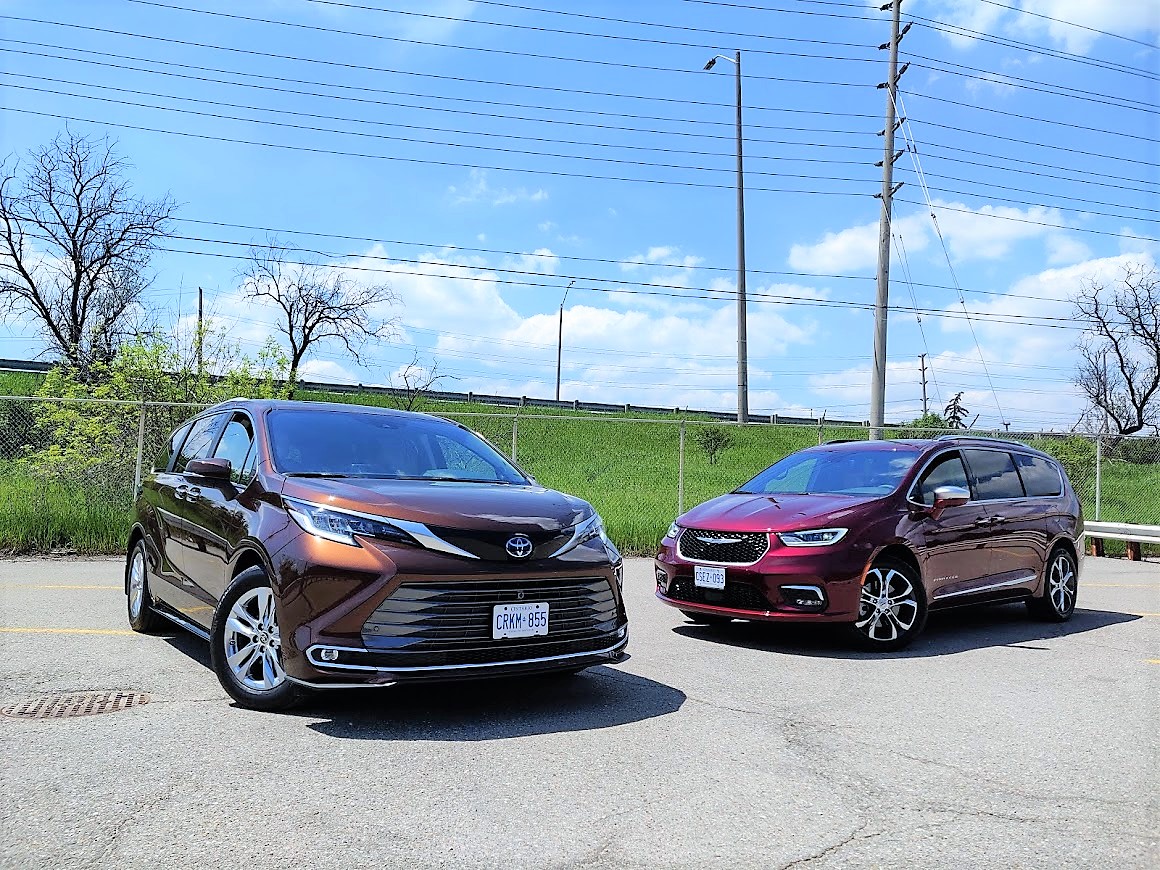By Shari Prymak
SUVs have become so ubiquitous that it is easy to forget that there was a time when minivans ruled supreme as the go-to choice for family transportation. In a way, it is a bit of a shame the way market taste has shifted because no SUV can truly replicate the packaging brilliance and unbeatable practicality of a well-deigned minivan. They remain the ultimate family haulers, as is the case with two of the top contenders: the Chrysler Pacifica and the Toyota Sienna.
The Chrysler Pacifica is the product of nearly four decades worth of minivan know-how. Chrysler invented the segment with its original Grand Caravan, and the latest Pacifica, particularly the top-trim Pinnacle version tested here, is the culmination of the company’s expertise. The Toyota Sienna might not have quite the same level of history behind it, but it is still a long-running and highly polished product. The latest version is now sold exclusively as a hybrid-electric vehicle. The Pacifica offers a choice between conventional gas power or a plug-in hybrid drivetrain with a short dedicated electric range.
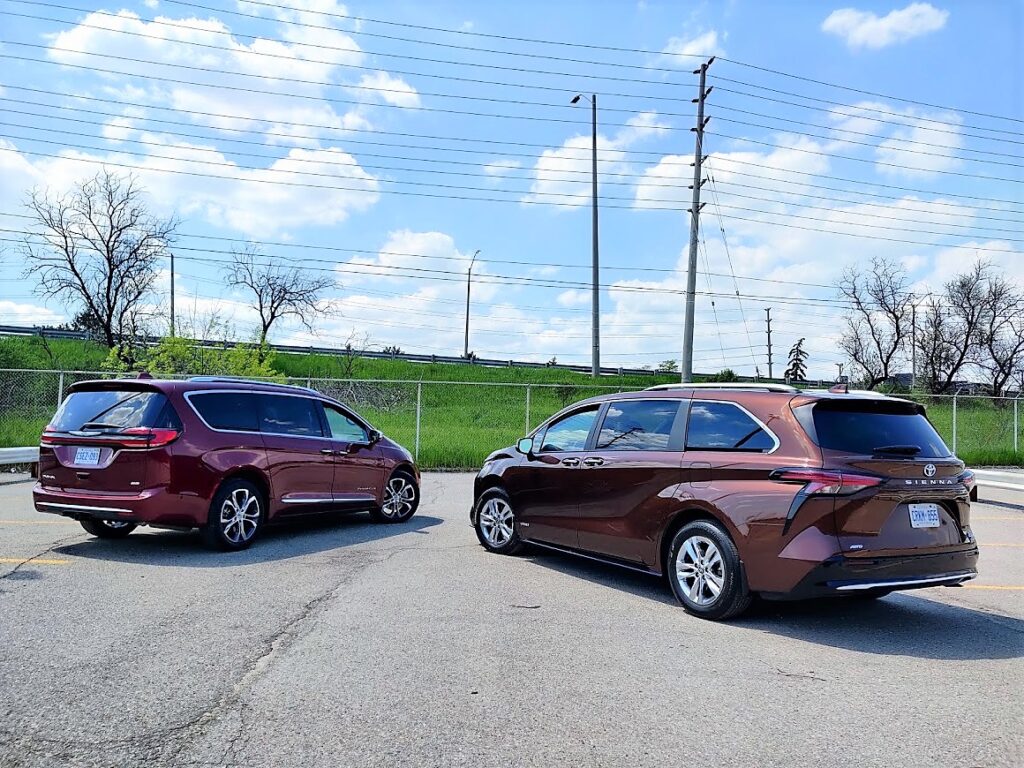
In the case of the Sienna, the hybrid system consists of a 2.5L 4-cylinder engine matched to an electric motor and battery pack producing a total of 245 horsepower. It sounds a tad modest when compared to the 287 horsepower V6 that powers the Pacifica, but it is enough to get the job done, and it operates seamlessly with total refinement. The real reward, however, is the outstanding fuel economy. The Sienna is easily able to achieve 7.5L/100km in mixed city and highway driving compared to the unimpressive 12.0L/100km achieved by the Pacifica. The plug-in hybrid would obviously improve those figures while adding an electric range of around 50km. Both models have generous towing capacity rated between 1,585 – 1,683kg depending on the configuration.
Another area where both minivans excel is the overall driving experience. The Sienna and Pacifica are equally enjoyable to drive with remarkably smooth rides, quiet cabins, and excellent road manners. Both are also well-equipped in the safety department with a comprehensive list of active safety technology and driving aids that make most trips feel effortless. The Sienna does have a tangible advantage with its available all-wheel drive system. Although front-wheel drive is standard on all trim-levels, all-wheel drive can be added as an option. The Pacifica offers all-wheel drive as an option as well, but only on the gas-powered models. The plug-in hybrid versions are front-wheel drive only.
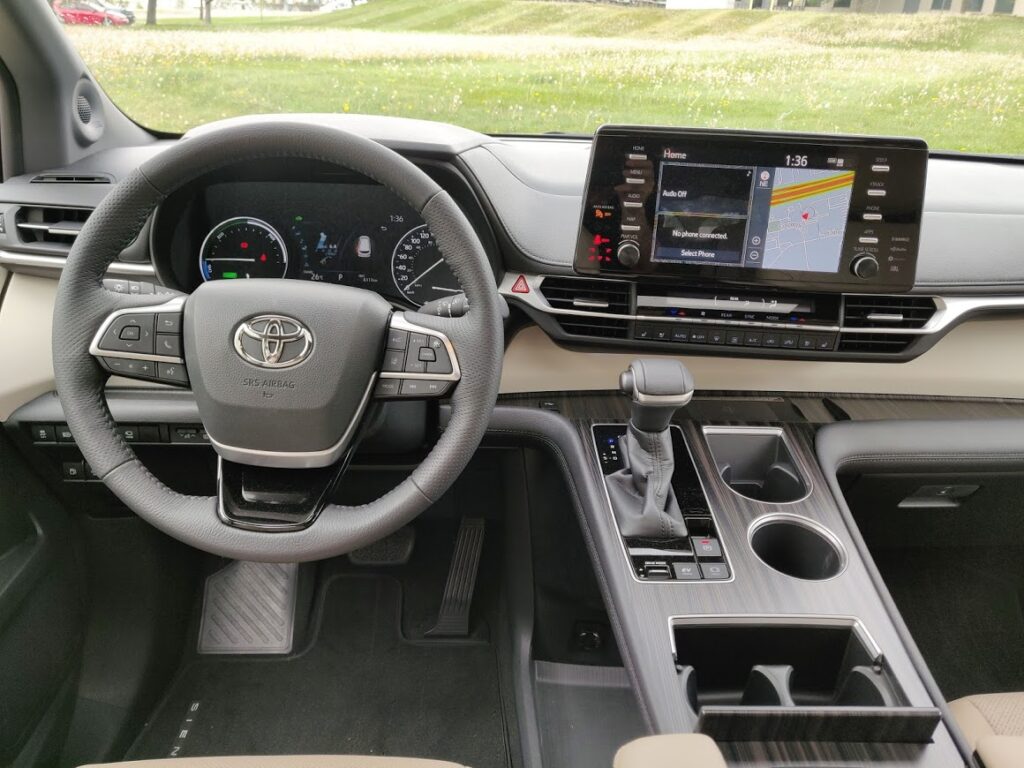
When it comes to the interior space, it is here where the differences between the Sienna and Pacifica become even more apparent. The Pacifica offers a spacious cabin with unbeatable practicality largely thanks to the trademark “stow n go” seating which allows both second and third rows to fold into the floor creating a massive cargo space. The Sienna can collapse its third row as well, but the second row chairs are only able to slide and tilt. Despite the Pacifica’s edge in the utility department, it is the Sienna which oddly feels more spacious. The second row chairs in particular can recline and slide back to an almost absurd degree to accommodate the tallest occupants. The amount of available space would embarrass most SUVs.
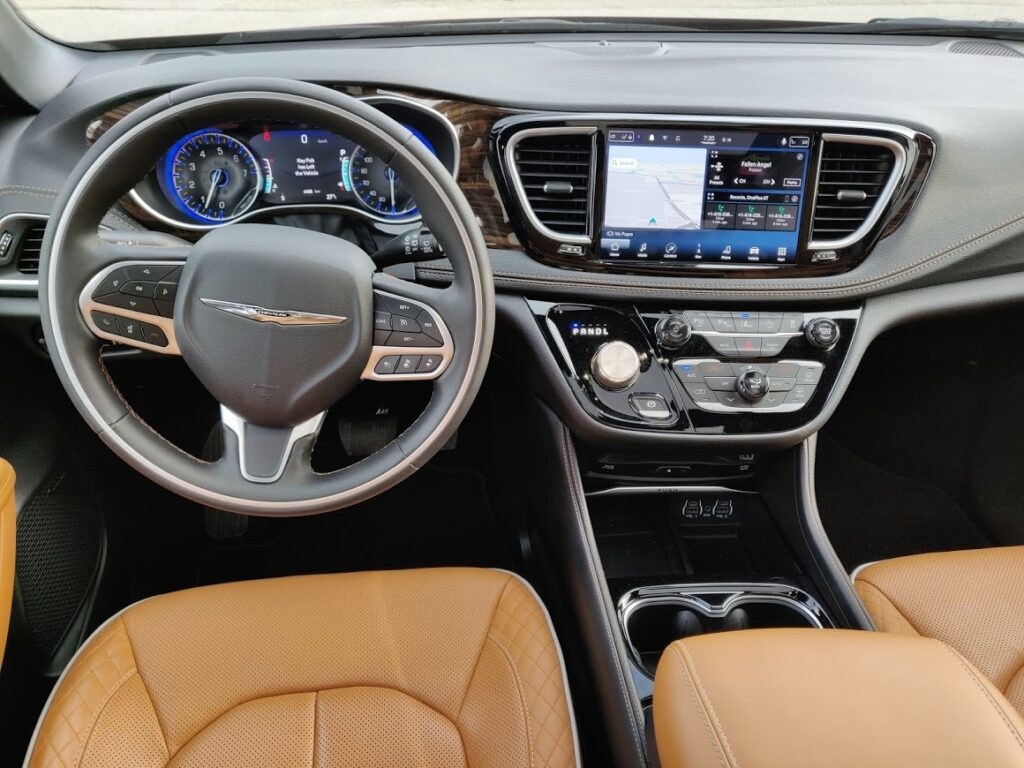
Where the Pacifica has the Sienna handily beat is in the features and technology department. The Sienna Limited offers an impressive interior with outstanding storage solutions and excellent build quality. The lengthy features list also extends to the rear seat occupants to include niceties such as foot-activated power sliding doors, heated rear seats, sun shades, and a flip down entertainment system. The Pacifica Pinnacle, however, matches it all and goes further. The 10.1 inch touchscreen infotainment system is so rich, responsive, and well-designed that it simply embarrasses the one found in the Sienna. The features list adds beautiful quilted nappa leather, more connectivity options, dual entertainment displays with kid-friendly games, a large panoramic sunroof, and even a built-in vacuum for cleaning messes. It basically leaves you wanting for nothing.
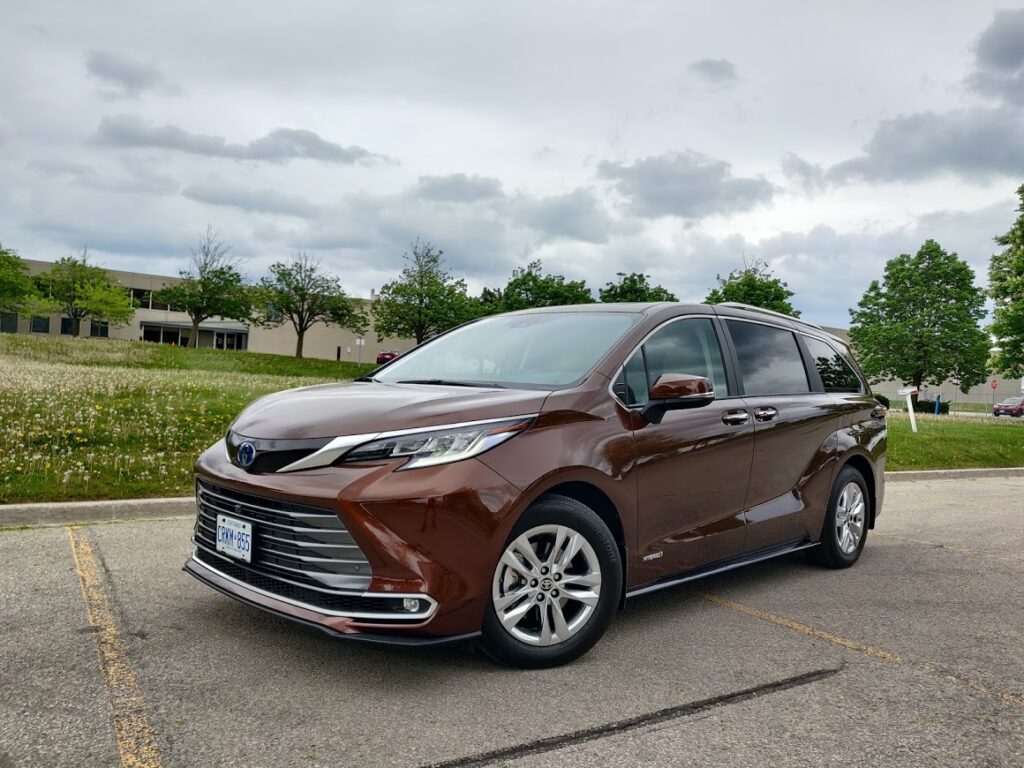
As far as pricing goes, the Sienna Hybrid price ranges from a base MSRP of $39,990 for the LE FWD up to $58,190 for the top trim Limited AWD tested here. The Pacifica lineup starts at $45,765 for the Touring FWD and tops out at $66,765 for the Pinnacle AWD. That sounds like an eye-watering amount to spend on a minivan, but it is rather lavishly equipped. Chrysler is also known for having incentive programs in regular circulation which means the actual price will likely be close to that of the Sienna. If you are shopping for a minivan, other options to consider include the Honda Odyssey and Kia Carnival.
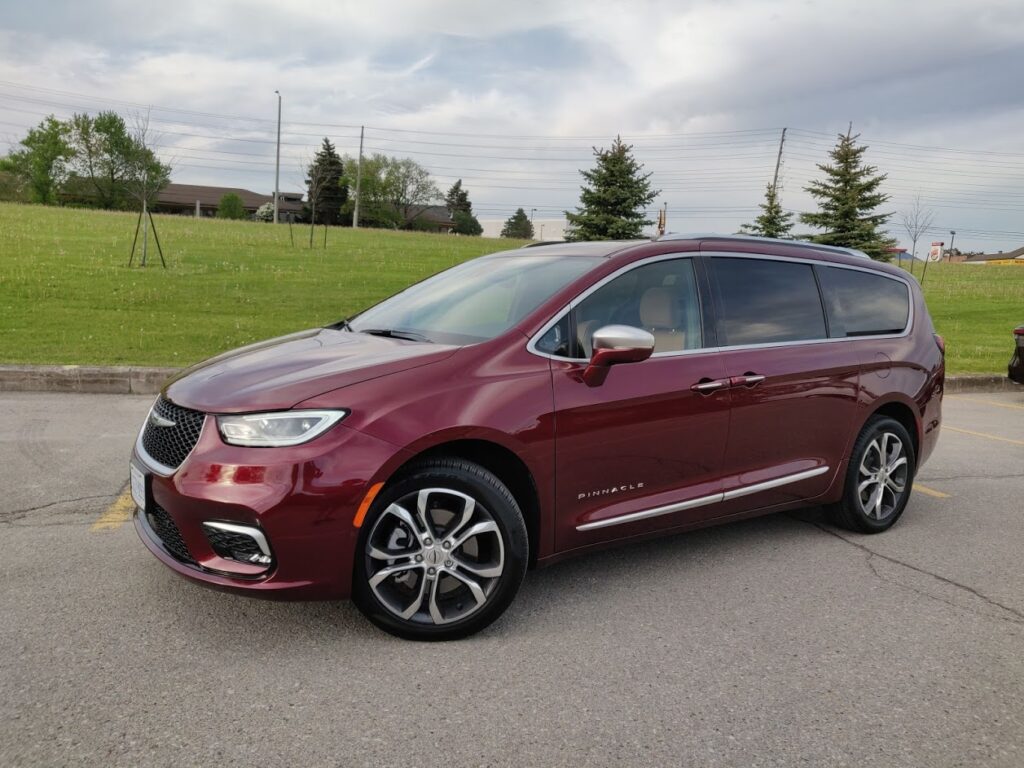
From a design point of view, both the Sienna and Pacifica are outstanding minivans. Each has a lot to offer a family looking for a strong blend of top-notch features, space, and capability. The Pacifica should appeal to those who value having the latest technology and features. When it comes to the financial piece, however, the Sienna is the clear winner. The pricing is more attractive, the fuel economy is outstanding, and the Sienna is historically known for excellent reliability and strong resale value. All things considered, it is the more well-rounded choice and one of the best minivans available on the market.

